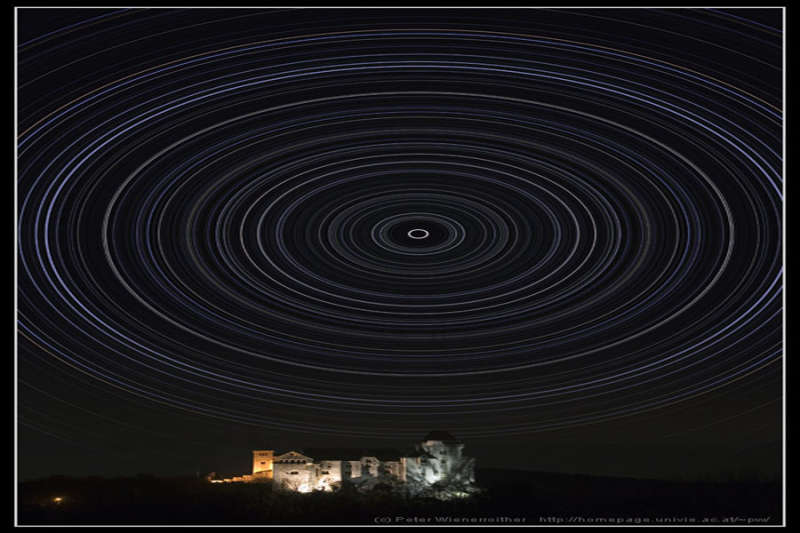
|
Credit & Copyright: Peter Wienerroither
(U. Wien)
Explanation:
You could be the first person ever to take a real single-exposure image like this.
The
above image from Vienna,
Austria is not real in the sense
that the 360 degree star trails in the sky appear only because of a digital trick.
Real star trails observed above
Vienna could never go 360 degrees
around because the Sun would rise at some time during the exposure and dominate the
frame.
Star trails of any length occur because as the Earth
spins on its axis, the sky seems to rotate around us.
This motion, called
diurnal motion,
produces the beautiful concentric
arcs traced by stars during long time exposures.
Towards the middle of the above digitally stretched picture is the North Celestial Pole (NCP), easily identified as the point in the sky at the
center of all the star trail arcs.
The star Polaris,
commonly known as the
North Star, made the very short bright circle near the NCP.
Walter Lewin,
though, has asked APOD to pose this
as a
challenge to astrophotographers: create a real single-exposure image of a clear
night sky that features 360 degree star trails.
Of course, such an image would only be possible near the poles of our fair planet,
because only there could a
nighttime run for more than
24 hours.
|
January February March April May June July August September October November December |
| ||||||||||||||||||||||||||||||||||||||||||||||||
NASA Web Site Statements, Warnings, and Disclaimers
NASA Official: Jay Norris. Specific rights apply.
A service of: LHEA at NASA / GSFC
& Michigan Tech. U.
Based on Astronomy Picture
Of the Day
Publications with keywords: star trail - north pole - north star - polaris
Publications with words: star trail - north pole - north star - polaris
See also:
